'Counting every school shooting so it never seems normal'
- Published
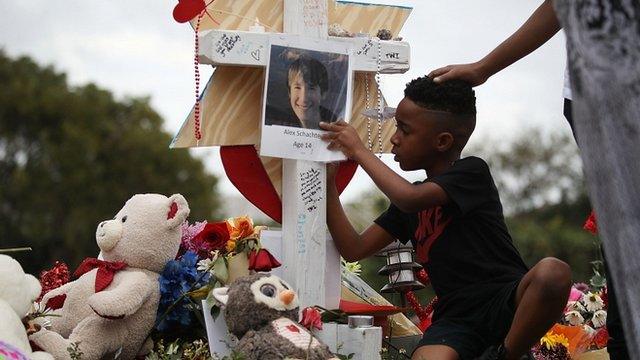
Every victim must count: A makeshift memorial outside the school shooting in Parkland, Florida
Marjory Stoneman Douglas High School in Parkland, Florida last week joined a grim list of murderous US school shootings, alongside Sandy Hook elementary school and Columbine high school.
But what about Marshall County High Schoolin Benton, Kentucky? Or Salvador Castro Middle School in Los Angeles, California? These were both sites of school shootings with casualties last month.
It might seem bizarre that school shootings have become such a regular occurrence in the US that unless there are many fatalities, the attention is often only fleeting.
Even before the deaths of 17 young people in Florida last week, a US education news organisation had decided there was an urgent need to make sure that every such incident was counted and publicly recorded.
Education Week, which usually covers stories about teachers and education policy, launched a year-long school shooting tracker, in a project called School shootings this year: How many and where, external.
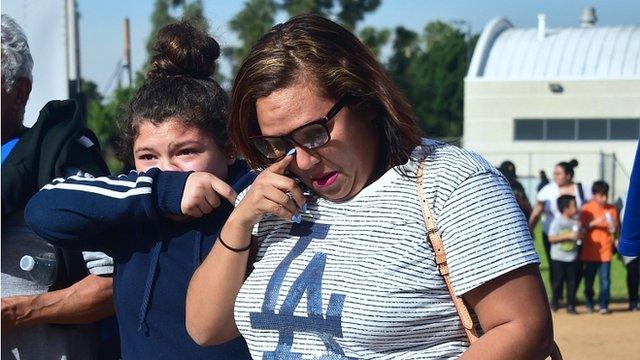
Parents collected their children after a school shooting in Los Angeles last month
"There's a danger of being desensitised. We shouldn't dismiss any of them as routine," says Kathleen Kennedy Manzo, the news organisation's managing editor.
"You have to stop and think this is a big event."
Recording the evidence
Since the beginning of 2018, there have 63 dead or injured in school shootings, according to the tracker's latest figures.
They have almost all been committed by teenagers or young adults, often with links to the school.
After the Parkland killings, there has been a high profile "Never Again" campaign by students calling for action to prevent such attacks - and to prevent such a regular loss of life ever seeming "normal".
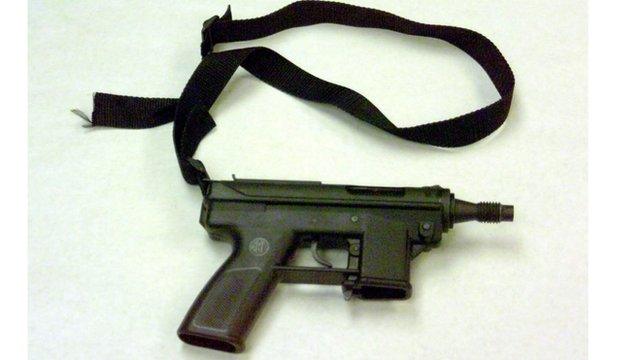
The automatic weapon used in the Columbine high school shooting
But the school shooting tracker is a warning of how quickly events can be forgotten by the national and international media.
How much attention is now paid to the attack in Benton, Kentucky, only a few weeks ago, where two teenagers were killed and children were injured in the rush to escape?
Ms Kennedy Manzo says that part of the problem on reporting school shootings has been the lack of reliable, independent, national information.
Local data can be inconsistent, she says, and the monitoring of attacks is often by campaign groups with their own political agenda.
Sandy Hook
The Education Week project is going to map school shootings where there have been casualties, and show the number of deaths and injuries for students and adults.
If there is going to be a review of gun policy, the education news organisation wants it to be informed by some hard evidence.
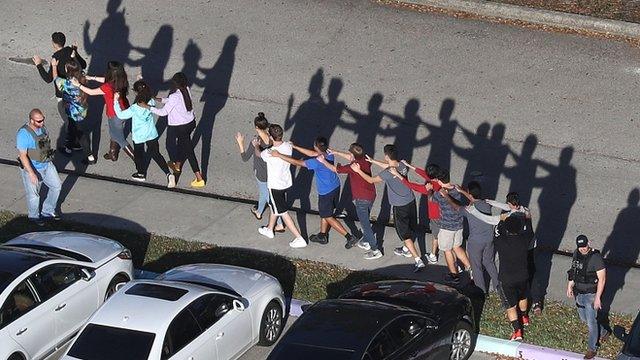
Students being taken to safety after the shooting incident in Parkland, Florida
There are other official sources showing the frequency of school shootings.
Such attacks were included in the FBI's tracking of "shooter incidents" between 2000 and 2013, which included the attack at Virginia Tech, in Blacksburg, Virginia, in which 32 people were killed, as well as 27 deaths at Sandy Hook in Newtown, Connecticut.
The analysis showed places of education were among the most frequent locations for shootings with multiple casualties.
Shooters were highly likely to be male and acting alone.
But what official statistics also show is that shootings are not part of a wider picture of US schools being more dangerous and violent places.
It's quite the opposite - as other types of violence in US schools are declining.
'Mass slaughter'
Figures from the US Department of Education and Department of Justice, published by the National Centre for Education Statistics, show that the number of fights in school have fallen sharply since the early 1990s.
The proportion of students bringing weapons into school have also declined.
But this pattern does not apply to shooting incidents, with numbers fluctuating almost as randomly as the attacks themselves.
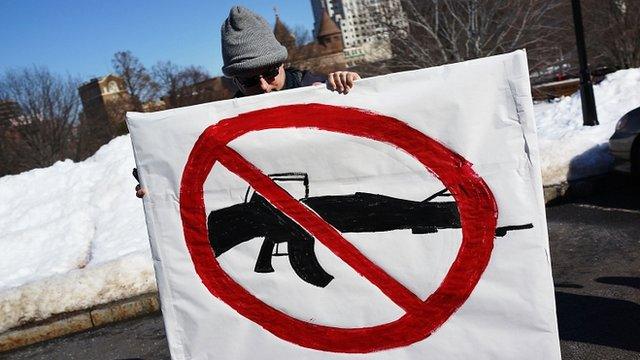
After Sandy Hook there were protests calling for tighter gun control
In the immediate aftermath of such shootings, Ms Kennedy Manzo says there are always calls for something to be done - but never with the same answer.
"State by state the debate goes a little differently," she says.
In some places there will be calls for more gun controls - and California, from the beginning of the year, has tightened regulations keeping guns out of schools.
In the wake of the Florida attack, Republican Senator Chris Murphy, whose Connecticut state includes Sandy Hook, condemned the political "inaction".
"This happens nowhere else other than the United States of America - this epidemic of mass slaughter, this scourge of school shooting after school shooting" said Senator Murphy.
"It only happens here. Not because of coincidence, not because of bad luck, but as a consequence of our inaction. We are responsible for a level of mass atrocity that happens in this country with zero parallel anywhere else."
Arming teachers
But there is no consensus - with calls for more guns as well as fewer. A survey from the Pew Research Centre showed 45% of people in the US were in favour of arming teachers and school staff.

An armoured vehicle sent to the high school shooting in Florida
This suggestion that teachers could be armed, so they could react immediately without waiting for emergency services, has been raised by President Trump.
In Ohio, individual schools are already allowed to decide how staff can protect themselves.
Joe Eaton is a manager of a firm in Ohio that trains teachers how to use weapons if there is an attack. He says pupils are safer with armed staff in schools trained to stop a shooter.
Mr Eaton, programme director for Faster Savers Lives, does not accept the argument that guns should be kept out of school.
He says that in an attack, calling the police is asking someone else to bring weapons into school.
It's more effective, and will save more lives, he argues, if there is already someone there who is armed.
While the debate continues unresolved, the school shooting tracker will record how many more innocent lives are lost this year.

More from Global education
Ideas for the Global education series? Get in touch with sean.coughlan@bbc.co.uk
